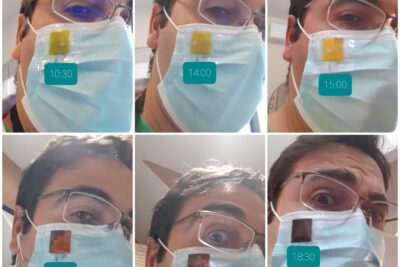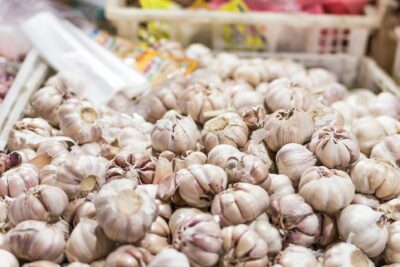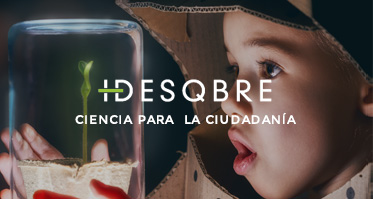Development of lacquers with tomato residue to coat the inside of cans and food packaging
An international team of researchers led by experts from the research centre Instituto de Hortofruticultura Subtropical y Mediterránea «La Mayora» (CSIC-Universidad de Málaga) has converted this material into a biodegradable lacquer that acts as an internal coating for food cans. This resin repels water better and adheres more firmly to the metal than those containing biphenol A, better known as BPA, a chemical compound present in many everyday consumer products which is harmful to health.
An international team of experts led by researchers from the research centres Instituto de Hortofruticultura Subtropical y Mediterránea ‘La Mayora’ (IHSM-CSIC-UMA), in Malaga, and the Instituto de Ciencia de los Materiales de Sevilla (ICMS-CSIC-US), located in the Cartuja Science and Technology Park in Seville, has developed tomato pomace lacquers to coat the inner surface of metal food packaging, food and beverage cans, among others.
https://youtu.be/S7Wrb4C0X_Q
To do so, the experts have reused the by-products obtained after processing tomatoes to make gazpachos, sauces or juices, which are made up of seeds, skins and small stalks. Today, tomato pomace is disposed of as solid waste, which is burned or, to a small extent, used in animal feed due to its low nutritional value.
Amongst its main characteristics, this biological and environmentally friendly resin derived from tomato processing residue repels water, adheres firmly to the metal of the can coated with it and has anti-corrosive properties against salt and any liquid. After tests with simulated food, the next step will be to test its effectiveness on cans and packaging containing real food and evaluate its industrial application.
Through this study, entitled ‘Bio-based lacquers from industrially processed tomato pomace for sustainable metal food packaging’, published in the Journal of Cleaner Production and which also includes the participation of researchers from the University of Malaga, the University of Seville, the Italian Institute of Technology and the Polytechnic University of Marche, experts propose a biodegradable alternative for coating food packaging based on the circular bioeconomy of a product such as tomato.
The aim is to reuse a waste product, i.e. the pomace of this fruit, as raw material for other products, in this case cans and other food containers. «From a waste product we obtain an ecological and sustainable raw material that has a very low environmental impact, as it reduces the generation of waste and, at the same time, minimises the extraction of fossil resources for the manufacture of these very containers,» as was explained to Fundación Descubre by Alejandro Heredia, researcher at the Instituto de Hortofruticultura Subtropical y Mediterránea ‘La Mayora’.

Researchers from Instituto de Hortofruticultura Subtropical y Mediterránea ‘La Mayora’ (IHSM-CSIC-UMA) . Image: Isabel Díaz.
Currently, steel and aluminium are the main materials used to manufacture metal cans and containers. When these are in contact with food, they can corrode the metal and thus contaminate the preserved food. To avoid this, the inside of these containers is coated with a very thin protective layer to prevent this corrosion of the metal. This adhesive resin is called epoxy and is a petroleum-derived plastic containing bisphenol A, better known as BPA, an industrial chemical compound that protects food, but at the same time releases particles that interfere with human health. «BPA is similar to estrogens, that is, it passes into food as an endocrine disruptor, just as hormones do, and is associated with the appearance of diseases such as cancer and diabetes, as well as growth problems in infants and adolescents,» Heredia points out.
Therefore, the use of BPA for the manufacture of food packaging such as food and beverage cans is banned in Spain by the Law on Waste and Contaminated Soils for a Circular Economy of 2022.
Hydrophobic, adherent and anti-corrosive lacquer
To obtain this resin, the experts let the tomato pomace samples dry and subjected them to a hydrolysis process, that is, they removed any remaining water to keep the lipids, in this case vegetable fat.
Once the fat was extracted, they mixed it with a minimal proportion of ethanol, an organic compound known as ethyl alcohol. «We dispersed the sample in about 80% water and 20% ethanol. Then, that dispersion of grease in water is sprayed directly onto the metal surface to be protected. This allows it to permeate the metal, stick to the can shape and resist subsequent cuts in the container,» the head of the study explains.
To achieve the binding of the molecules in the mixture and obtain the resin, the experts applied heat. «We subjected the lacquer to a temperature of 200 degrees for a very short period of time, between 10 and 60 minutes, and thus obtained the resin,» Heredia explains.
Finally, the experts found that tomato pomace resin is hydrophobic, i.e., it repels water. In addition, it has a high adhesion rate to the metal of the can it coats. «If the container falls, suffers blows or receives an impact during its transport, for example in a delivery truck, the resin acts as a protective barrier between food and metal,» says the researcher from «La Mayora».
In addition to these qualities, this resin also has a high anti-corrosive capacity against salt and any liquid. «The compounds of this lacquer do not pass into the food and, therefore, do not contaminate the product contained in the can, as is the case with BPA resin,» Heredia explains.
Tests with simulated food
To confirm all these properties, the experts carried out tests with food simulants, as established by the European Union regulations for plastics that are in contact with food. «We use products that mimic the behaviour of a group of foods with similar characteristics. For example, we use ethanol solutions as if they were soups, oils as if they were creams and absorbent polymers as if they were dry food,» Heredia specifies.
In addition to identifying the characteristics of tomato pomace resin as a coating for the inside of the containers, experts have evaluated the environmental impact of the manufacture of this resin.

To achieve the binding of the molecules in the mixture and obtain the resin, the experts applied heat. Image: Isabel Díaz.
To this end, they have analysed the entire manufacturing process, from the extraction of the raw material to the production of the lacquer and its final use. They have also compared these results with the equivalent process when using BPA resin, and what happens if tomato pomace is eliminated by burning it directly in the industry. «This analysis reveals that obtaining tomato pomace resin produces less carbon dioxide than BPA resin. And when not using the tomato pomace but burning it instead to get rid of it, the pollution it produces is also greater than its reuse as a resin,» Heredia points out.
At the same time, they have also identified and quantified the effects on human health caused by the production of this resin. «The impact levels are low compared to the effects of the use of BPA in everyday products», warns the researcher of «La Mayora».
After carrying out tests with food simulants, the next step will be to test the behaviour of the resin with real food. «We would take tomato sauce, tuna, and other foods that are usually sold in cans, and we would sterilize them, put them in tins and check if they withstand real conditions,˝ Heredia explains.
This study has been funded by the Spanish Ministry of Science and Innovation, the Department of University, Research and Innovation of the Regional Government of Andalusia (Spain) and ERDF (European Regional Development Fund).
Spanish’s version: Desarrollan resinas con desechos de tomate para recubrir el interior de latas y envases de alimentos
References
José J. Benítez, María C. Ramírez-Pozo, María M. Durán Barrantes, Antonio Heredia, Giacomo Tedeschi, Luca Ceseracciu, Susana Guzmán Puyol, David Marrero López Alessandro Becci , Alessia Amato, José A. Heredia Guerrero: ‘Bio-based lacquers from industrially processed tomato pomace for sustainable metal food packaging’. Journal of Cleaner Production. Febrero de 2023.
Más información:
#CienciaDirecta, agencia de noticias de ciencia andaluza, financiada por la Consejería de Universidad, Investigación e Innovación de la Junta de Andalucía, con la colaboración de la Fundación Española para la Ciencia y la Tecnología-Ministerio de Ciencia e Innovación.
Teléfono: 958 63 71 99. Extensión 205
Additional documentation
Alejandro Heredia, the main research of the proyecto, with the resin.
Últimas publicaciones
Se trata de un sistema innovador de indicación visual del tiempo de exposición en mascarillas de protección facial. Una invención que ha sido desarrollada el grupo de investigación OMEGAs, liderado por el profesor del Centro de Nanociencia Tecnologías Sostenibles (CNATS) de la Universidad Pablo de Olavide (UPO) de Sevilla José María Pedrosa. También han participado los investigadores Javier Roales y David Rodríguez, en colaboración con el empresario sevillano José Antonio Rodríguez, quien ya ha iniciado los primeros pasos para su comercialización.
Sigue leyendoEstos resultados se desprenden de una investigación liderada por el Consejo Superior de Investigaciones Científicas. Aunque el estudio se ha realizado en ratones y no es directamente aplicable a humanos, los científicos consideran que se trata de una vía de trabajo prometedora. El trabajo incluye, además, un estudio observacional en humanos que revela que las personas con mayor fuerza muscular, mejor perfil de triglicéridos y menor propensión a sufrir algunas alteraciones neurocognitivas eran precisamente quienes tenían potenciados algunos de los mecanismos sobre los que actúan estos compuestos del ajo.
Sigue leyendoJunto con la exposición ‘Paseos Matemáticos Al-Ándalus’, ambas muestras podrán visitarse hasta el 24 de diciembre dentro de las actividades organizadas con motivo de la 14ª edición del Festival de las Ciudades Antiguas, donde España es este año el país invitado de honor.
Tras la inauguración y las visitas guiadas por las exposiciones, se celebraron dos conferencias a cargo del director científico del proyecto ‘Paseos Matemáticos’, Álvaro Martínez Sevilla y la directora de la Fundación Descubre Teresa Cruz Sánchez.





